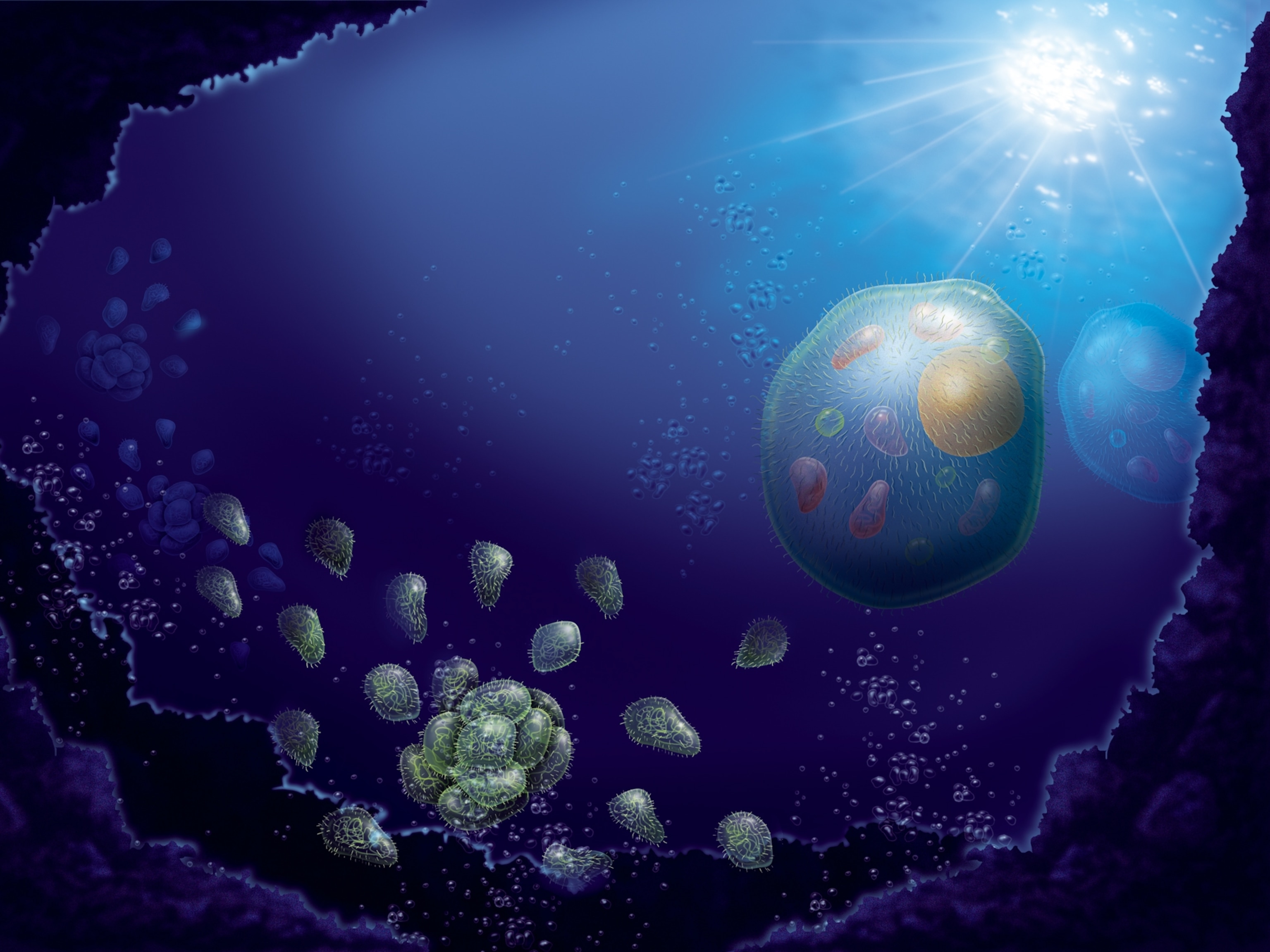

New Fuel Cell Project Aims to Make Port of Honolulu Greener
Clean hydrogen power will soon be arriving at the Port of Honolulu in Hawaii, in a project that’s expected to help lower emissions and reduce energy consumption.
Early next year, specially designed shipping containers powered by fuel cells and hydrogen will be used to keep refrigerated containers cool while they’re shipped on barges from island to island in Hawaii.
The project is being led by Sandia National Laboratories and funded by the U.S. Department of Energy’s Office of Energy Efficiency and Renewable Energy (EERE) and the U.S. Department of Transportation’s Maritime Administration (MARAD).
Ports across the U.S. are a major source of water and air pollution that have gone relatively unregulated until recently. Major ports sometimes have emissions that are equivalent to those of half a million cars a day, according to a video produced by Sandia. Many are now beginning to work on implementing sustainability goals and adopting greener practices.
During a six-month deployment, the fuel cell units that are currently being designed for Honolulu will take the place of some diesel generators to provide efficient, pollution-free auxiliary power for Young Brothers, Ltd. The portable units can be used sitting on a dock or on the barge to provide electrical power.
Young Brothers, a subsidiary of the Foss Maritime Company, is a primary shipper of goods throughout the Hawaii Islands.
“We’re one of the first projects or deployments to use fuel cells and hydrogen in a maritime environment,” said Sandia’s project manager Joe Pratt, who also appears in the Sandia video. “This project is really helping to develop regulations and codes” for fuel cells.
“There’s a very important distinction between powering the vessel and powering something on the vessel,” Pratt noted. This project won’t power the vessels themselves, but the refrigerated containers on the vessels.
When Sandia was exploring possibilities for using fuel cells in a maritime environment in 2012, Pratt connected with Young Brothers and the Port of Honolulu and found that this application would be a good demonstration, and that Young Brothers would be a good partner for Sandia, Pratt said. The company was chosen more for the application than its location.
Still, while many people might already think of Hawaii as lush and green, the island chain has big challenges when it comes to power. The islands have to import nearly all of their energy because they lack fossil fuels. Expensive petroleum fuels more than 70 percent of its electricity generation, and residential electricity rates are three times the national average, according to the U.S. Energy Information Administration.
But energy efficiency overall has been improving in recent years, and the generation from renewable sources has increased from 4 percent a share in 2002 to 12 percent last year. The state has a goal to produce 70 percent of its electricity from clean energy by 2030.

A study of West Coast ports conducted by Sandia last year determined that shippers like Young Brothers could save fuel and energy while creating less pollution if they switch primarily to plugging into a fuel cell instead of running diesel engine generators to power refrigerated containers at the port.
Sandia said in a press release that the new power unit will fit inside a 20-foot shipping container and will consist of four 30-kilowatt fuel cells, a hydrogen storage system and power conversion equipment.
If the project proves successful, Pratt said the concept could be expanded on in a number of ways, including helping with loading and unloading operations, running equipment that’s used on the docks, and powering electrical systems while ships are at sea.
Foss says the company is excited about the deployment and its potential.
“At Foss, environmental stewardship is one of our core values and we’ve been doing quite a bit of things for quite a few years to raise the bar on environmental awareness,” said Susan Hayman, vice president for health, safety, quality and environmental for Foss Maritime. “Hydrogen fuel cell technology isn’t something that’s wide commercially available … we’re in an industry that’s been around for a very long time, and we’re always looking for ways to … do things more efficiently.”
Hayman said that the price of hydrogen is the “big unknown” in the project, but that Foss tends to be “test bed for a lot of new technologies that are out there, as long as we can do it safely.” (Sandia’s basic fuel cost analysis found that hydrogen could be cost-competitive with traditional fuels, based on prices in 2013.)
Hayman noted that “cheap sources of energy for Hawaii in the long run would be fantastic,” and that Young Brothers and Foss planned to share what they learn from the project with other shipping companies.
Sandia’s Pratt says the long-range goal for the project is to create commercial-ready technology that can be installed at other ports worldwide.
Related Topics
You May Also Like
Go Further
Animals
- Octopuses have a lot of secrets. Can you guess 8 of them?
- Animals
- Feature
Octopuses have a lot of secrets. Can you guess 8 of them? - This biologist and her rescue dog help protect bears in the AndesThis biologist and her rescue dog help protect bears in the Andes
- An octopus invited this writer into her tank—and her secret worldAn octopus invited this writer into her tank—and her secret world
- Peace-loving bonobos are more aggressive than we thoughtPeace-loving bonobos are more aggressive than we thought
Environment
- This ancient society tried to stop El Niño—with child sacrificeThis ancient society tried to stop El Niño—with child sacrifice
- U.S. plans to clean its drinking water. What does that mean?U.S. plans to clean its drinking water. What does that mean?
- Food systems: supporting the triangle of food security, Video Story
- Paid Content
Food systems: supporting the triangle of food security - Will we ever solve the mystery of the Mima mounds?Will we ever solve the mystery of the Mima mounds?
- Are synthetic diamonds really better for the planet?Are synthetic diamonds really better for the planet?
- This year's cherry blossom peak bloom was a warning signThis year's cherry blossom peak bloom was a warning sign
History & Culture
- Strange clues in a Maya temple reveal a fiery political dramaStrange clues in a Maya temple reveal a fiery political drama
- How technology is revealing secrets in these ancient scrollsHow technology is revealing secrets in these ancient scrolls
- Pilgrimages aren’t just spiritual anymore. They’re a workout.Pilgrimages aren’t just spiritual anymore. They’re a workout.
- This ancient society tried to stop El Niño—with child sacrificeThis ancient society tried to stop El Niño—with child sacrifice
- This ancient cure was just revived in a lab. Does it work?This ancient cure was just revived in a lab. Does it work?
- See how ancient Indigenous artists left their markSee how ancient Indigenous artists left their mark
Science
- Jupiter’s volcanic moon Io has been erupting for billions of yearsJupiter’s volcanic moon Io has been erupting for billions of years
- This 80-foot-long sea monster was the killer whale of its timeThis 80-foot-long sea monster was the killer whale of its time
- Every 80 years, this star appears in the sky—and it’s almost timeEvery 80 years, this star appears in the sky—and it’s almost time
- How do you create your own ‘Blue Zone’? Here are 6 tipsHow do you create your own ‘Blue Zone’? Here are 6 tips
- Why outdoor adventure is important for women as they ageWhy outdoor adventure is important for women as they age
Travel
- This royal city lies in the shadow of Kuala LumpurThis royal city lies in the shadow of Kuala Lumpur
- This author tells the story of crypto-trading Mongolian nomadsThis author tells the story of crypto-trading Mongolian nomads
- Slow-roasted meats and fluffy dumplings in the Czech capitalSlow-roasted meats and fluffy dumplings in the Czech capital




